Author: Lisa
Editor: Sherry
In April 2025, the Federal Bureau of Investigation (FBI) released the "2024 Cryptocurrency Fraud Report." This report analyzes the number of cryptocurrency-related complaints, the scale of losses, victim profiles, types of crimes, and asset recovery progress, based on data collected by the FBI's Internet Crime Complaint Center (IC3) in 2024. This article will interpret the core content of the report to help readers quickly grasp trend changes and enhance their awareness and prevention capabilities against complex cybersecurity threats.
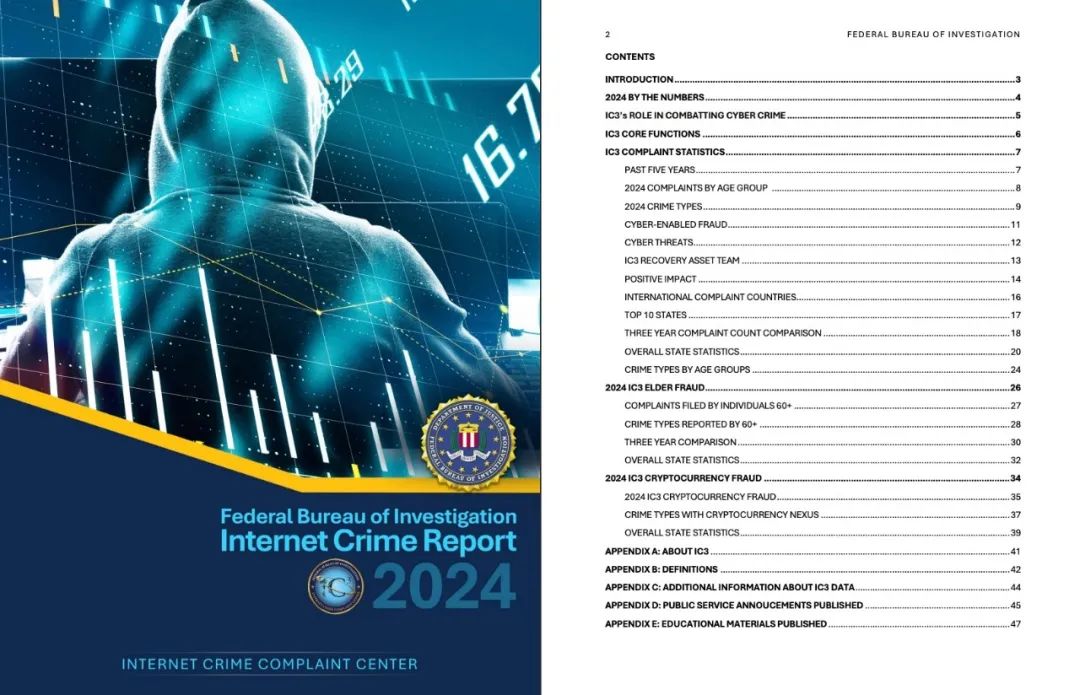
Key Point 1: 2024 Complaint Data
1. Overall Situation
In 2024, IC3 received a total of 859,532 complaints, resulting in actual losses of $16.6 billion, a 33% increase compared to 2023. Among these, 256,256 complaints involved actual financial losses, with an average loss of approximately $19,372 per incident. About 83% of the losses were caused by online scams.
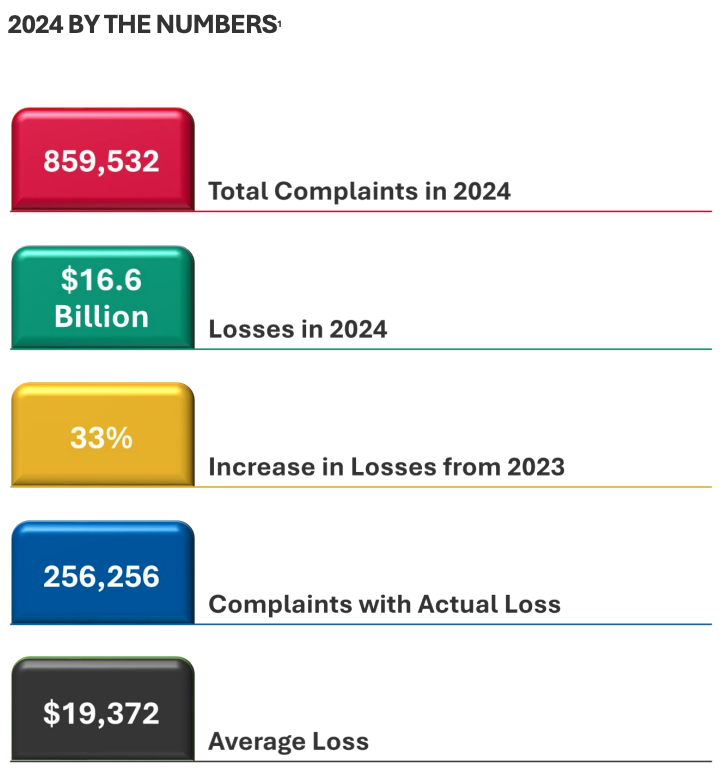
2. Cryptocurrency-Related Situation
Complaints related to cryptocurrency reached 149,686, causing losses of $9.3 billion, with a year-on-year increase of 66% in loss amounts. Among the victims, the group aged 60 and above accounted for the highest proportion.
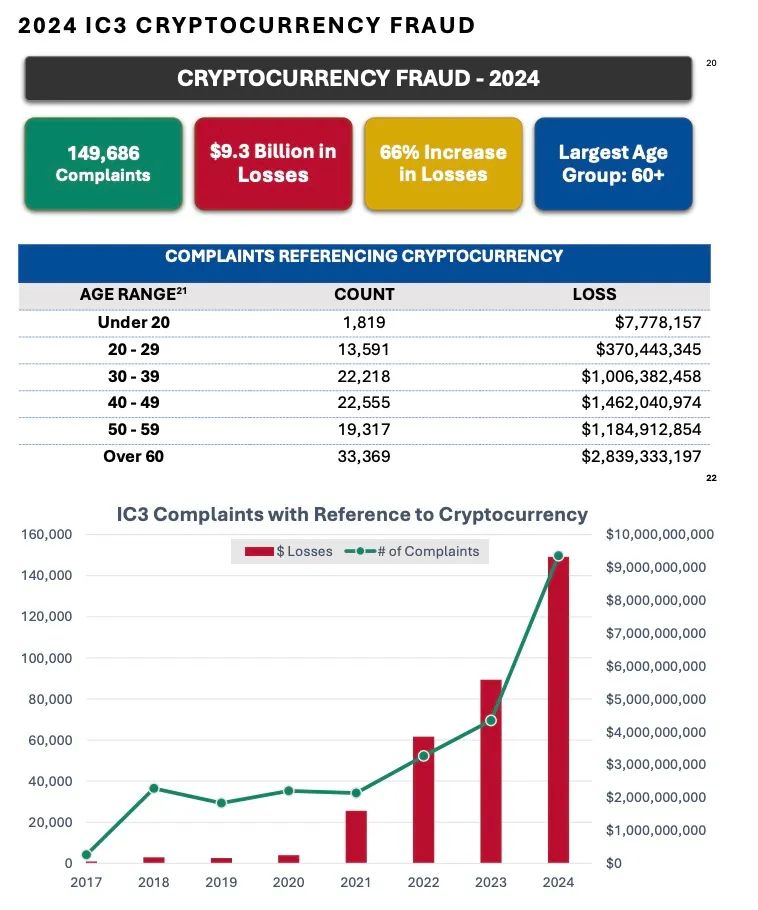
3. Group Aged 60 and Above
This group submitted 147,127 complaints, reporting losses of $4.885 billion. The number of complaints increased by 46% year-on-year, and the loss amount increased by 43% year-on-year. Among them, 7,500 individuals reported losses exceeding $100,000, with an average loss of up to $83,000.
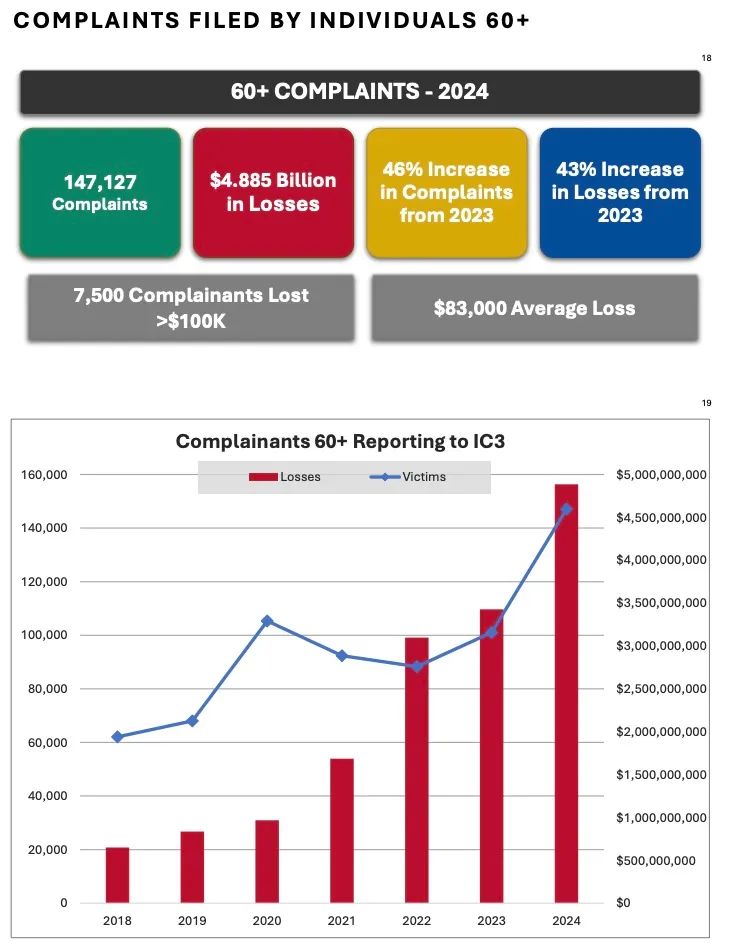
Key Point 2: Victim Group Analysis
1. Overall Age Distribution
- Under 20 years: 17,993 complaints, losses of $22.5 million.
- Ages 20-29: 71,399 complaints, losses of $540.1 million.
- Ages 30-39: 108,899 complaints, losses of $1.4 billion.
- Ages 40-49: 112,755 complaints, losses of $2.2 billion.
- Ages 50-59: 84,540 complaints, losses of $2.5 billion.
- Ages 60 and above: 147,127 complaints, losses of $4.8 billion.
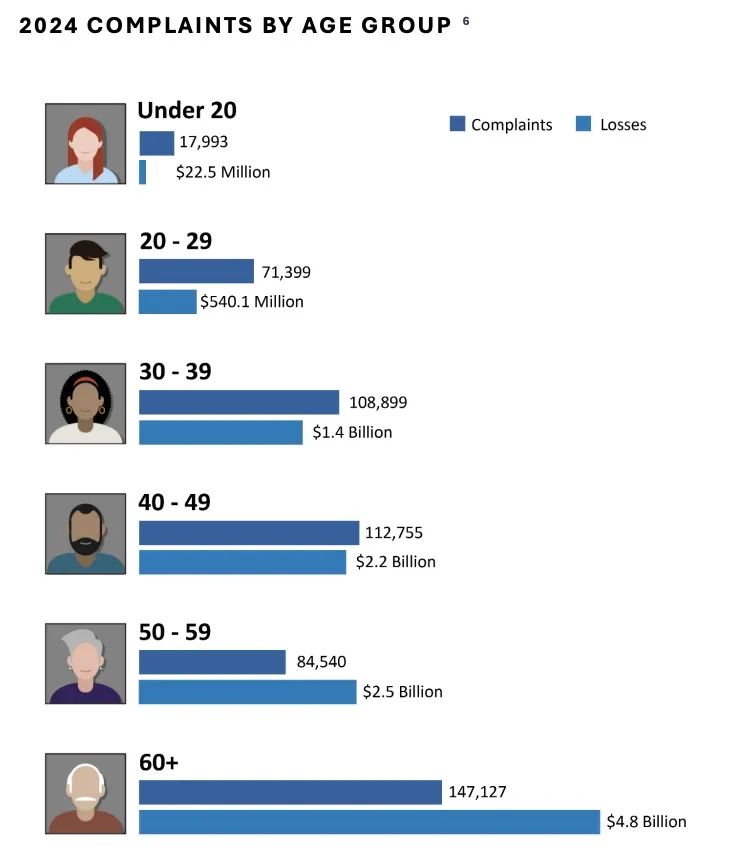
2. Cryptocurrency Victim Group
In cryptocurrency investment scams, the group aged 60 and above had the highest number of complaints (8,043), with losses amounting to $1.6 billion, far exceeding other age groups. This group is a primary target for scammers due to insufficient fraud awareness and unfamiliarity with new payment methods like cryptocurrency ATMs (2,674 complaints, loss amounting to $107,206,251), and they also had the most complaints in extortion/sexual extortion cases (20,445 complaints, loss amounting to $724,288,735).
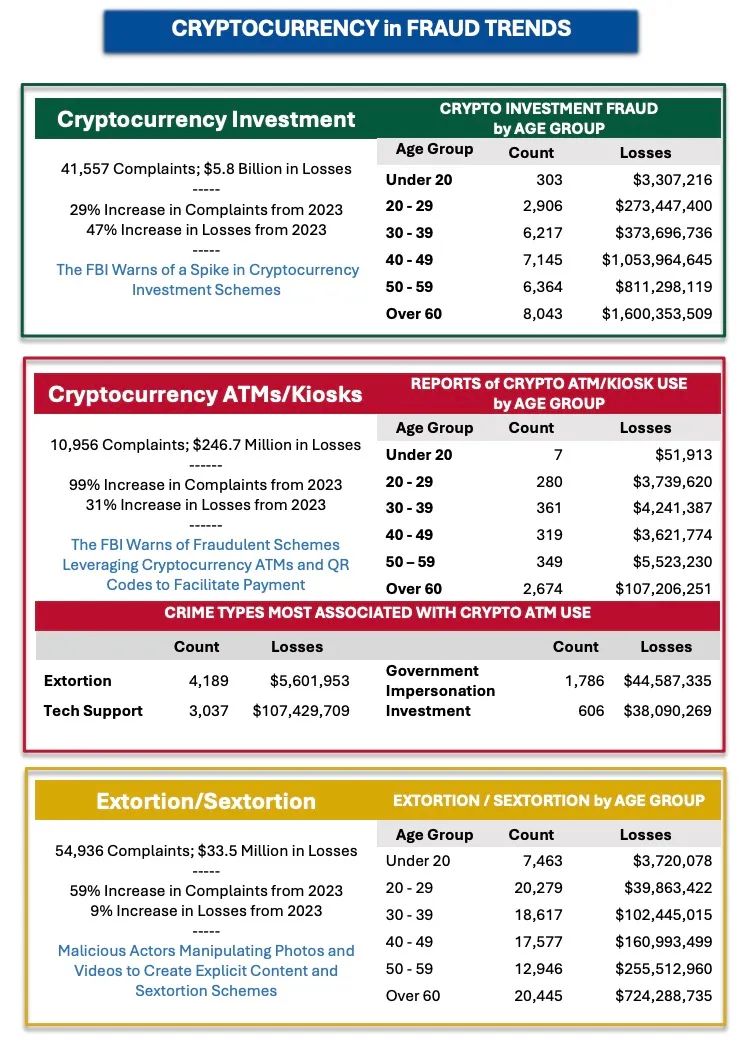
Key Point 3: Crime Type Analysis
1. By Number of Complaints
- Phishing/Electronic Deception: 193,407 complaints.
- Extortion: 86,415 complaints.
- Personal Data Breach: 64,882 complaints.
- Chargeback/Transaction Failure Scams: 49,572 complaints.
- Investment Scams: 47,919 complaints.
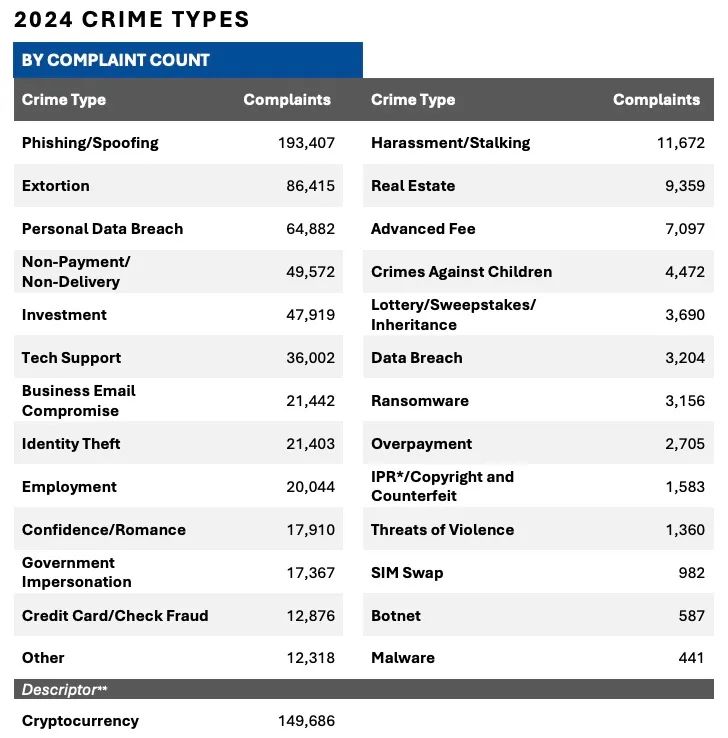
2. By Loss Amount
- Investment Scams: $6.57 billion.
- Business Email Compromise (BEC): $2.77 billion.
- Tech Support Scams: $1.46 billion.
- Personal Data Breach: $1.45 billion.
- Chargeback/Transaction Failure Scams: $785 million.
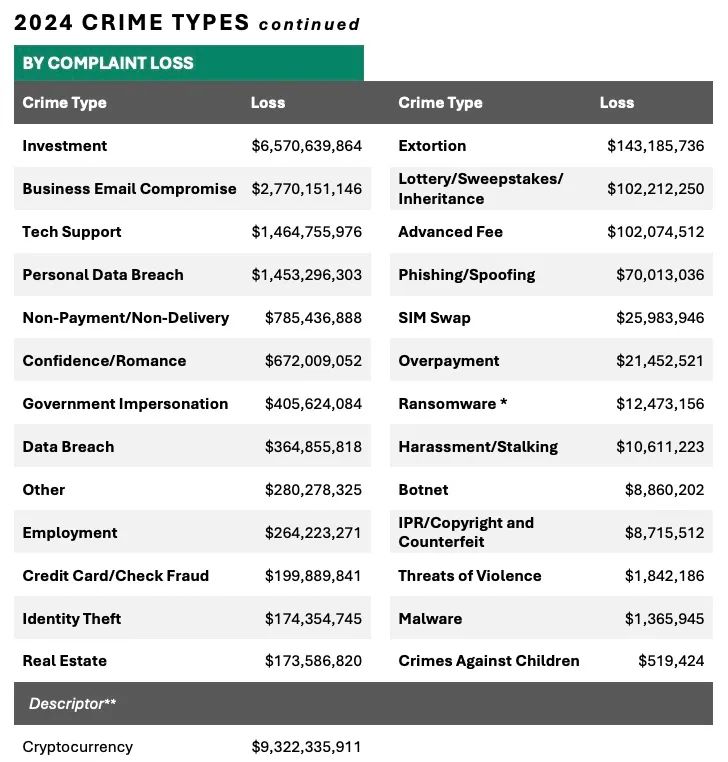
3. Cryptocurrency-Related Crimes
- Most Complaints: Extortion (47,054), Investment Scams (41,557).
- Highest Losses: Investment Scams ($5.8 billion), Personal Data Breach ($1.1 billion).
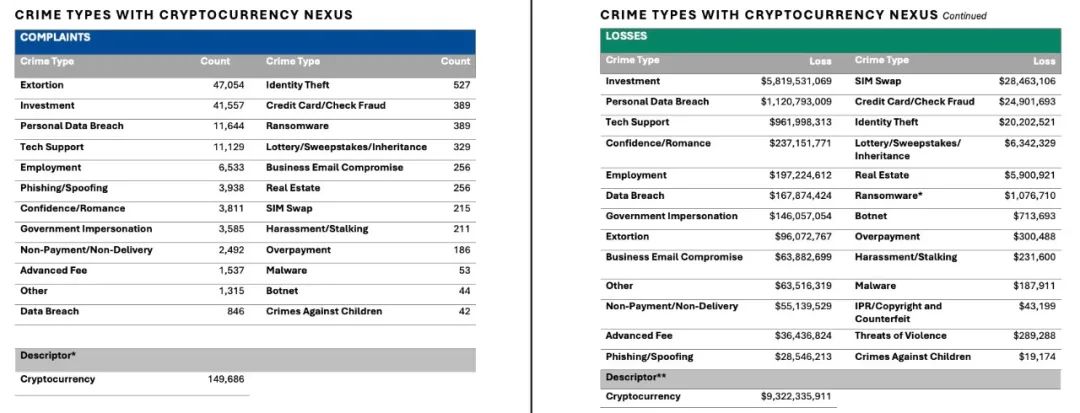
4. Main Scam Types Encountered by the 60 and Above Group
- Scam types with the most complaints: Phishing, Tech Support, Extortion, Personal Data Breach, Investment Scams.
- Scam types with the highest losses: Investment Scams, Tech Support, Romance Scams, Business Email Compromise (BEC), Personal Data Breach.
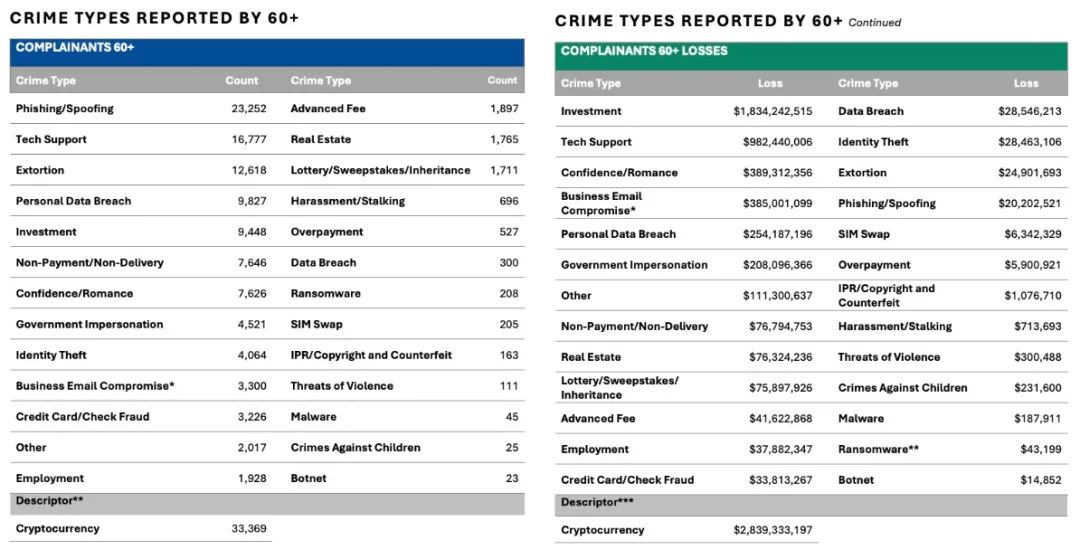
Key Point 4: Online Scams and Asset Recovery
1. Overall Situation of Online Scams
In 2024, IC3 received 333,981 complaints related to online scams, resulting in losses of $13.7 billion, accounting for 83% of the total losses for the year. The main transaction methods included cryptocurrency, wire transfers, and credit card payments.
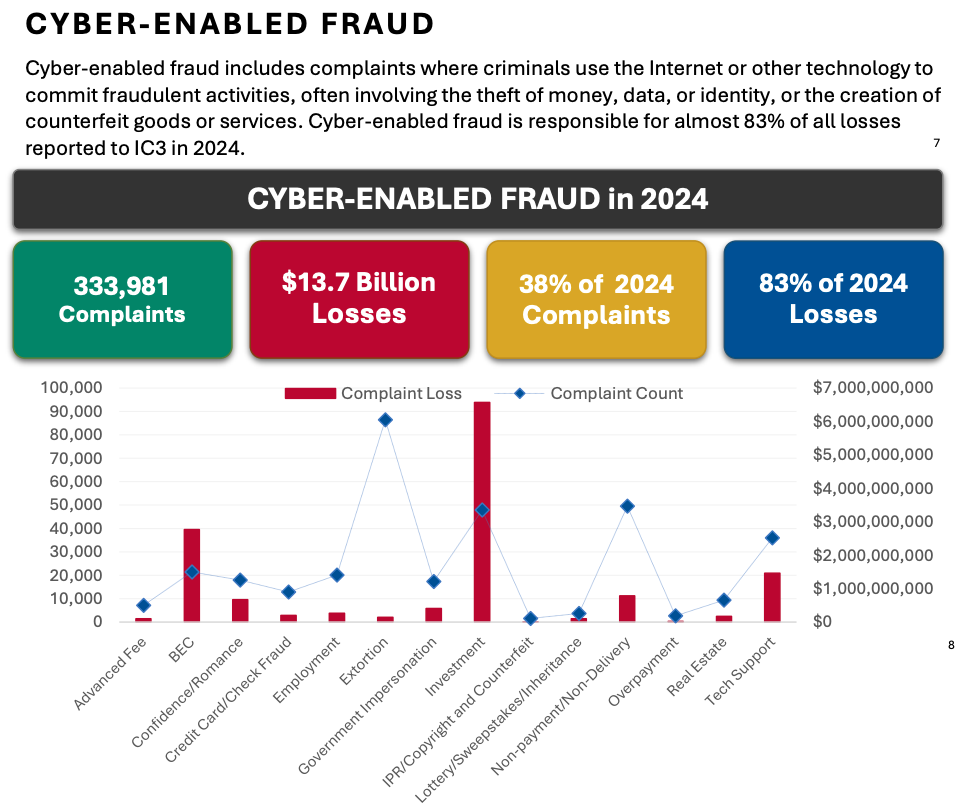
2. Typical Scam Techniques
- Call Center Scams: 53,369 complaints, losses of $1.9 billion.
- Emergency Scams (Impersonating Relatives): 357 complaints, losses of $2.7 million.
- Toll Road Scams (SMS Phishing): 59,271 complaints, losses of $129,000.
- Gold Delivery Scams: 525 complaints, losses of $219 million.

3. Cyber Threats
263,455 complaints related to cyber threats caused losses of $1.571 billion. The main variants of ransomware included Akira, LockBit, RansomHub, FOG, and PLAY.
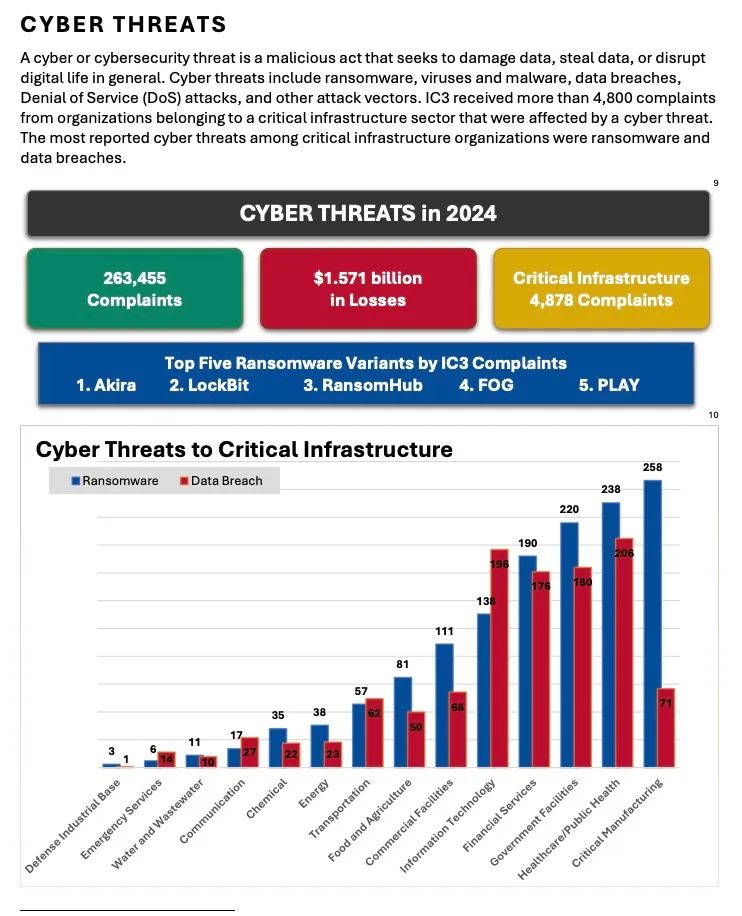
4. Asset Recovery Achievements
- The FFKC team processed a total of 3,020 freeze requests, freezing $560 million, with a recovery success rate of 66%.
- The "Operation Level Up" successfully notified 4,323 victims of cryptocurrency scams, helping recover approximately $285 million in potential losses.
- Collaborating with Indian law enforcement to combat call center scams, resulting in the arrest of 215 individuals, a 700% increase year-on-year.
- Successfully froze and recovered multiple large sums in financial fraud projects.
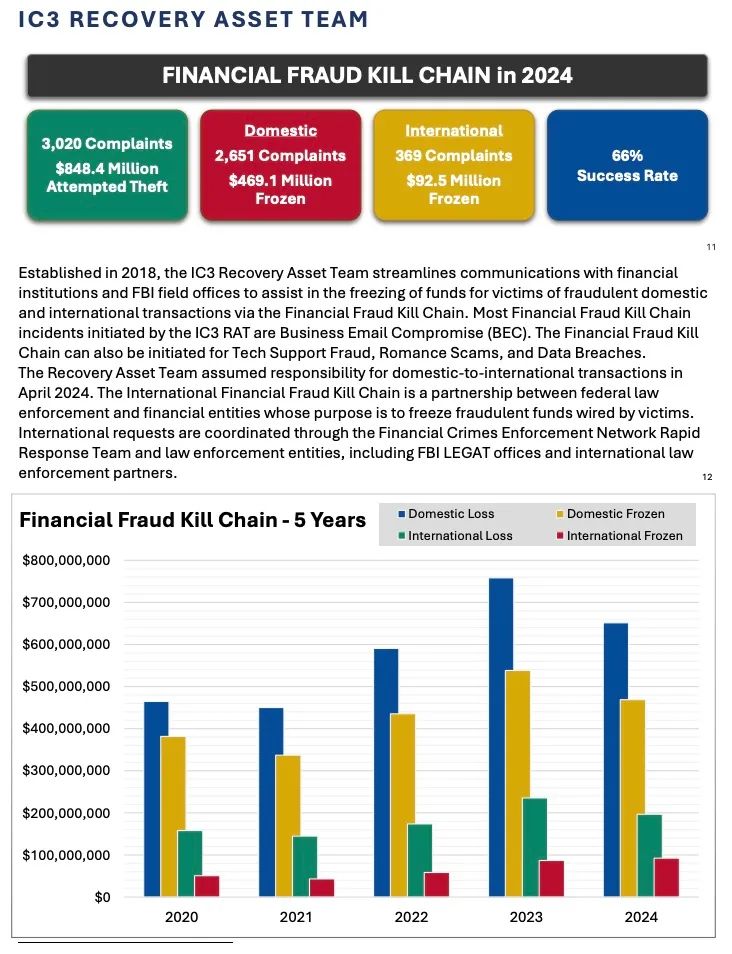
Key Point 5: Preventing Cryptocurrency Scams
In response to the high incidence of cryptocurrency scams, the FBI has proposed the following prevention recommendations:
- Stay vigilant and avoid high-return temptations: High returns with zero risks are often scams.
- Verify the legitimacy of trading platforms: Use legitimate, regulated exchanges and avoid clicking on unknown links in social media ads.
- Avoid transferring money to strangers: Do not trust "investment mentors" or "friends" met online.
- Be cautious with cryptocurrency ATM transactions: Scammers often ask victims to make payments through ATMs, so remain alert.
- Use two-factor authentication (2FA): Enhance account security to prevent hacking.
Conclusion
The FBI's "2024 Cryptocurrency Fraud Report" reveals new trends in cybercrime within the current cryptocurrency asset environment: a significant increase in cryptocurrency-related cases, with the elderly group aged 60 and above becoming the primary victims; scam techniques are highly specialized and internationalized, while cryptocurrency has become the preferred tool for criminals to launder and transfer funds.
Despite some progress in asset recovery and international law enforcement cooperation, ordinary users still need to remain highly vigilant, effectively enhance their security awareness, and avoid falling into various scam traps. For governments and financial institutions, continuously strengthening international collaboration, regulatory enforcement, and tracking the flow of funds will be key measures to curb cybercrime and improve enforcement efficiency.
免责声明:本文章仅代表作者个人观点,不代表本平台的立场和观点。本文章仅供信息分享,不构成对任何人的任何投资建议。用户与作者之间的任何争议,与本平台无关。如网页中刊载的文章或图片涉及侵权,请提供相关的权利证明和身份证明发送邮件到support@aicoin.com,本平台相关工作人员将会进行核查。




